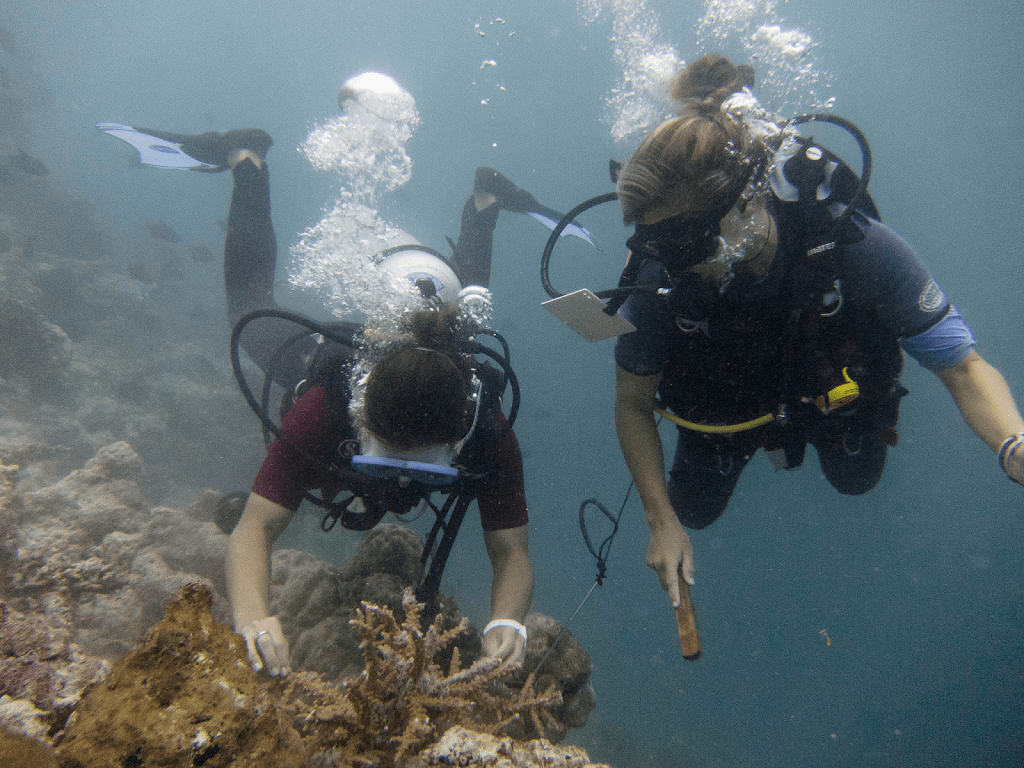At Gili Lankanfushi, we are recovering our coral reefs through the Coral lines Project. By growing small fragments of coral on hanging ropes (lines) and then transplanting them to our house reef near One Palm Island, we hope to see regeneration and aim to kick start the health of our house reef.
 |
| Josie monitoring our 153 coral lines |
The vulnerable nature of coral populations mean that they undergo cycles of disturbance and recovery. Our house reef was affected by warmer waters created by the El Nino event in 2016 which bleached much of the corals. Yet against all odds, most fragments in our coral lines nursery survived. They have also been faced with a Crown of Thorns (coral predators) outbreak this year and have still remained intact. In some cases, the corals in our lines are no longer present on shallow reefs in the area.
Now, is the perfect time to begin stage two of our coral restoration project by moving coral from our nursery to our house reef. Transplanting coral is a delicate procedure with a lot of trial and error. We began slowly by creating a test site with a small number of coral colonies to ensure we would not lose healthy coral unnecessarily.
 |
| Josie beginning the process |
We found a site with conditions not too dissimilar to the nursery. The area had to be flat and solid, with no loose material and space for growth. It also had to be an area that is easily accessible for monitoring, but nowhere in danger of tampering or accidental damage. We chose a depth of 8 metres in the middle of house reef drop off where we regularly snorkel. Another major concern was the Crown of Thorns Starfish, so we placed the coral in an area visited regularly by Harvey Edwards, Ocean Paradise Dive Centre manager, who has been removing these starfish from the reef for months.
| Clare cutting the coral from the line |
The next step was to cut the colonies from the lines in the nursery, and transport them in mesh bags in the water. We decided to use three different Acropora species to begin with as they are fast growing and like a lot of light and a moderate current. Once at the site, we cleaned the area of algae and attached the coral to ensure protection from extreme water movement. We placed them an equal distance apart to allow quick growth and attached the coral using epoxy, which is a clay like cement. We were aware from previous studies that Miliput (epoxy clay) has been seen to kill the part of the coral it is attaching, so we placed small amounts of putty at the base of the coral.
Once a week, for a total of six weeks, we will measure growth and survivorship of the coral. We hope to replicate the test at different depths and locations to find a suitable site to start a larger restoration project. However, we will hold off on most of the major transplantation until after the monsoon season.
 |
| Attaching the colonies using epoxy |
Due to the fragility of coral species, our rehabilitation plans are very flexible, and subject to a long monitoring period. We expect to adapt our approach and long term management to ensure we keep up with the changing environment of the reef. Previous restoration plans have been hindered by external threats, so we are so excited to finally begin this project. We will be producing scientific data along the way which we hope will contribute to current coral reef rehabilitation knowledge.


